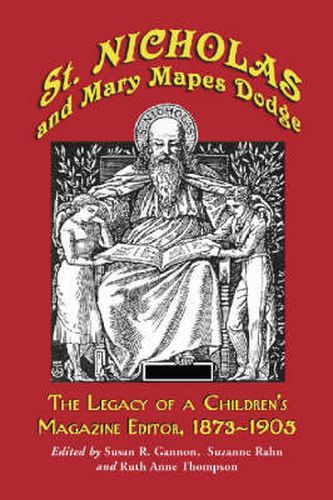Readings Newsletter
Become a Readings Member to make your shopping experience even easier.
Sign in or sign up for free!
You’re not far away from qualifying for FREE standard shipping within Australia
You’ve qualified for FREE standard shipping within Australia
The cart is loading…






This title is printed to order. This book may have been self-published. If so, we cannot guarantee the quality of the content. In the main most books will have gone through the editing process however some may not. We therefore suggest that you be aware of this before ordering this book. If in doubt check either the author or publisher’s details as we are unable to accept any returns unless they are faulty. Please contact us if you have any questions.
St. Nicholas is acknowledged to be the best children’s magazine published, particularly during the reign of its founding editor, Mary Mapes Dodge. From 1873 to 1905, Dodge worked to create what she called a
pleasure ground
for children - a magazine that would have great impact on several generations of children. The list of authors who wrote for her includes Louisa May Alcott, Frances Hodgson Burnett, Henry Wadsworth Longfellow, Rudyard Kipling, Theodore Roosevelt, and Mark Twain. The quality of the magazine’s illustration was equally high. The magazine was also the launching pad for a new generation of authors and artists, such as F. Scott Fitzgerald, E. B. White, Jack London, and Eudora Welty. This anthology of critical writing on St. Nicholas includes the most influential articles already published and newly commissioned essays on a variety of subjects, including the impact of the St. Nicholas league, the utopian thrust of the magazine’s fiction, and how Dodge persuaded Kipling to become a children’s writer. Essays also analyze Dodge’s relationship with her readers, her editorial practice, the illustrations, American family life as seen by young British readers, war and military life, advertising, and the middle class preoccupation with
change of fortune
tales. The work places St. Nicholas in American cultural history, and analyzes how it both influenced and was influenced over thirty years. Essential documentary material presently unpublished or inaccessible and illustrations from the magazine are also included.
$9.00 standard shipping within Australia
FREE standard shipping within Australia for orders over $100.00
Express & International shipping calculated at checkout
This title is printed to order. This book may have been self-published. If so, we cannot guarantee the quality of the content. In the main most books will have gone through the editing process however some may not. We therefore suggest that you be aware of this before ordering this book. If in doubt check either the author or publisher’s details as we are unable to accept any returns unless they are faulty. Please contact us if you have any questions.
St. Nicholas is acknowledged to be the best children’s magazine published, particularly during the reign of its founding editor, Mary Mapes Dodge. From 1873 to 1905, Dodge worked to create what she called a
pleasure ground
for children - a magazine that would have great impact on several generations of children. The list of authors who wrote for her includes Louisa May Alcott, Frances Hodgson Burnett, Henry Wadsworth Longfellow, Rudyard Kipling, Theodore Roosevelt, and Mark Twain. The quality of the magazine’s illustration was equally high. The magazine was also the launching pad for a new generation of authors and artists, such as F. Scott Fitzgerald, E. B. White, Jack London, and Eudora Welty. This anthology of critical writing on St. Nicholas includes the most influential articles already published and newly commissioned essays on a variety of subjects, including the impact of the St. Nicholas league, the utopian thrust of the magazine’s fiction, and how Dodge persuaded Kipling to become a children’s writer. Essays also analyze Dodge’s relationship with her readers, her editorial practice, the illustrations, American family life as seen by young British readers, war and military life, advertising, and the middle class preoccupation with
change of fortune
tales. The work places St. Nicholas in American cultural history, and analyzes how it both influenced and was influenced over thirty years. Essential documentary material presently unpublished or inaccessible and illustrations from the magazine are also included.